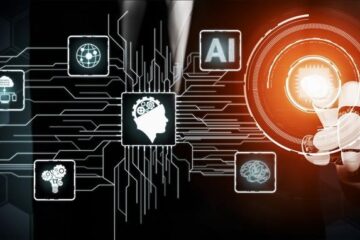Whether in healthcare, entertainment, or daily life, Artificial Intelligence (AI) has become an integral part of our digital ecosystem. AI seems to reshape our world at a meteoric pace driving innovation and redefining industrial practices and processes across the globe. Among so many AI subfields Generative AI (GenAI) seems to take us aback totally. With its uncanny wisdom, GenAI has influenced our daily lives substantially as it seems to know anything and everything and can do all the routine tasks or even the most creative of jobs, sometimes better than humans. As AI and GenAI draw our attention with a considerable degree of awe and wonder, knowing the basics of AI becomes imperative. Here’s a recount as we discuss the essentials of AI, the rise of Generative AI, how it works, the models involved, and the ethical challenges surrounding it.
How Many Types of AI Are There?
To understand Generative AI, let’s first understand how AI is categorized based on its functions and capabilities. AI can be broadly classified into several types based on its capabilities and applications: here we go.
- Artificial Narrow Intelligence (ANI): The most common form of AI in use today is ANI. It is designed to perform specific tasks like facial recognition, language translation, or chess playing. Its intelligence is limited to the task it was designed for.
- Artificial General Intelligence (AGI): AGI is a more advanced form of AI, which can perform any intellectual task that humans can. It’s flexible and capable of adapting to new tasks and learning across multiple domains. However, AGI is still largely theoretical and remains a long-term goal of AI research.
- Artificial Super-intelligence (ASI): ASI is the concept of AI surpassing human intelligence in every field, including creativity, problem-solving, and emotional intelligence. Though speculation, ASI presents the potential to revolutionize every aspect of human existence, but it also comes with significant ethical considerations.
Currently, Generative AI falls under Artificial Narrow Intelligence (ANI) and is the most in-demand subset due to its ability to create, innovate, and transform digital landscapes in ways that were previously unimaginable.
Why is Generative AI the Most In-Demand?
Generative AI has risen to the forefront of technological demand for several reasons:
- Creativity at Scale: Astonishingly enough, Generative AI can produce art, music, and text that are indistinguishable from human-made content. GenAI can also be given the credit of being highly creative and ingenious provided it’s fed with the right prompts. From generating photorealistic images to composing music and writing entire books, GenAI is democratizing creativity.
- Automation of Complex Tasks: Unlike traditional AI systems that require large amounts of data for pattern recognition, Generative AI can create new data points. This attribute of GenAI has made it highly useful in fields such as drug discovery, where it can simulate molecular interactions to propose new compounds or drugs.
- Personalization: Whether it’s marketing, entertainment, or education, GenAI offers hyper-personalized content tailored to individual users. Whether it’s recommending products, generating music playlists, or even providing custom learning pathways, the capability of GenAI to adapt to user preferences makes it indispensable. With all its cognitive abilities to comprehend, analyze, and personalize content and its capacity to solve problems, it has emerged to be a very useful companion to humans.
- Cost-Efficiency: By automating creative processes and producing content quickly and at scale, Generative AI reduces time and resources spent. This leads to significant cost savings on tasks that traditionally require human intervention.
What is Generative AI (GenAI)?
Generative AI (GenAI) refers to AI systems that can create new content, ideas, or solutions based on the data they are trained on. Unlike traditional AI models that classify or predict based on input data, GenAI goes one step further by generating new data—such as text, images, audio, or video—similar to the input but novel in its own right.
For example, popular AI models like OpenAI’s GPT-4 can generate human-like text, while DALL·E can create images from textual descriptions. These systems are trained on vast datasets and can “imagine” new possibilities within the confines of their training.
Understanding the Basics of GenAI
At its core, GenAI leverages machine learning (ML) models—especially deep learning techniques. These models learn the underlying patterns and structures of data during training. Once trained, they use this learned knowledge to generate new instances that are similar to but not exact copies of the training data.
Two main approaches are commonly used in GenAI:
- Generative Adversarial Networks (GANs): GANs are made of two neural networks namely, a generator and a discriminator. The generator creates new data, while the discriminator evaluates how closely the generated data resembles the original dataset. Over time, the generator improves its output until the discriminator cannot distinguish between real and generated data.
- Transformer-Based Models: Transformers like GPT (Generative Pre-trained Transformer) and BERT (Bidirectional Encoder Representations from Transformers) are models that understand and generate human-like text. They use self-attention mechanisms to focus on important parts of the input, enabling them to produce coherent and contextually relevant output.
Different Models of Generative AI
Here are some of the popular models that are used in Generative AI:
- GPT-3 and GPT-4: Developed by OpenAI, these models are capable of generating human-like text and can be used for applications like chatbots, article writing, and even coding assistance.
- DALL·E: Also, from OpenAI, DALL·E is a model that generates images from text prompts, allowing users to create unique artwork based on their descriptions.
- Stable Diffusion: This model generates high-quality images from textual descriptions and has applications in fields like advertising, gaming, and graphic design.
- DeepDream: Created by Google, this model enhances and generates psychedelic imagery based on input photos, revealing hidden patterns and structures.
These models are continually evolving and are becoming more powerful, enabling increasingly sophisticated outputs across a wide range of industries.
How Does Generative AI Work?
Generative AI operates on the principles of machine learning, particularly unsupervised or semi-supervised learning. The process involves:
- Training: The AI model is trained on a large dataset (e.g., millions of images or text documents). During training, the model learns to understand the structure and characteristics of the data.
- Generation: After the training phase, the model is ready to create new data. Based on a prompt or input, it generates new content that is similar to the original dataset but novel in its execution.
- Optimization: Many GenAI models, like GANs, go through iterative processes where one model generates content, and another evaluates its accuracy. Over time, the generator becomes more refined, producing increasingly realistic outputs.
Challenges and Ethical Considerations
Generative AI, while revolutionary, brings with it significant challenges and ethical concerns:
- Deepfakes: One of the most controversial uses of GenAI is the creation of deepfake videos and images, where realistic but fake media is generated. These can be used maliciously to spread misinformation or create harmful content.
- Copyright Issues: Since GenAI models are often trained on large datasets sourced from the internet, the question of copyright infringement arises. Artists, photographers, and writers are concerned that their work could be used without permission to train AI models.
- Bias and Fairness: GenAI models can inadvertently perpetuate biases present in the data they are trained on. For example, if a model is trained on biased or skewed datasets, it may produce outputs that reflect those biases, which can lead to unethical or harmful outcomes.
- Job Displacement: As AI becomes more capable of automating creative and technical tasks, there is growing concern about the impact on jobs in fields like design, writing, and content creation.
Future of Generative AI
The future of Generative AI looks overwhelmingly promising, with endless possibilities for innovation across industries. The key areas of development that seem to hover on the horizon are:
- Improved Creativity: GenAI is expected to enhance human creativity, acting as a collaborative tool for artists, writers, and musicians rather than a replacement.
- Healthcare: GenAI is already making strides in drug discovery, where it can generate new molecules for research. In the future, it may be used to create personalized treatment plans based on a patient’s unique needs.
- Education: With its ability to generate customized learning materials, GenAI has the potential to revolutionize education, offering personalized curricula for students at every level.
- Ethical AI Development: As the use of GenAI becomes more widespread, the focus on ethical AI practices will intensify. Developers and companies will need to create frameworks that address privacy, bias, and fairness to ensure the responsible use of AI.
Conclusion
At large, Generative AI is transforming the way we think about creativity, automation, and problem-solving. By understanding the basics of how it works, its applications, and the challenges it presents, we can better navigate its potential while addressing the ethical concerns it raises. As GenAI continues to evolve, its role in shaping the future will undoubtedly grow, opening new doors in industries from entertainment to healthcare, and beyond.

